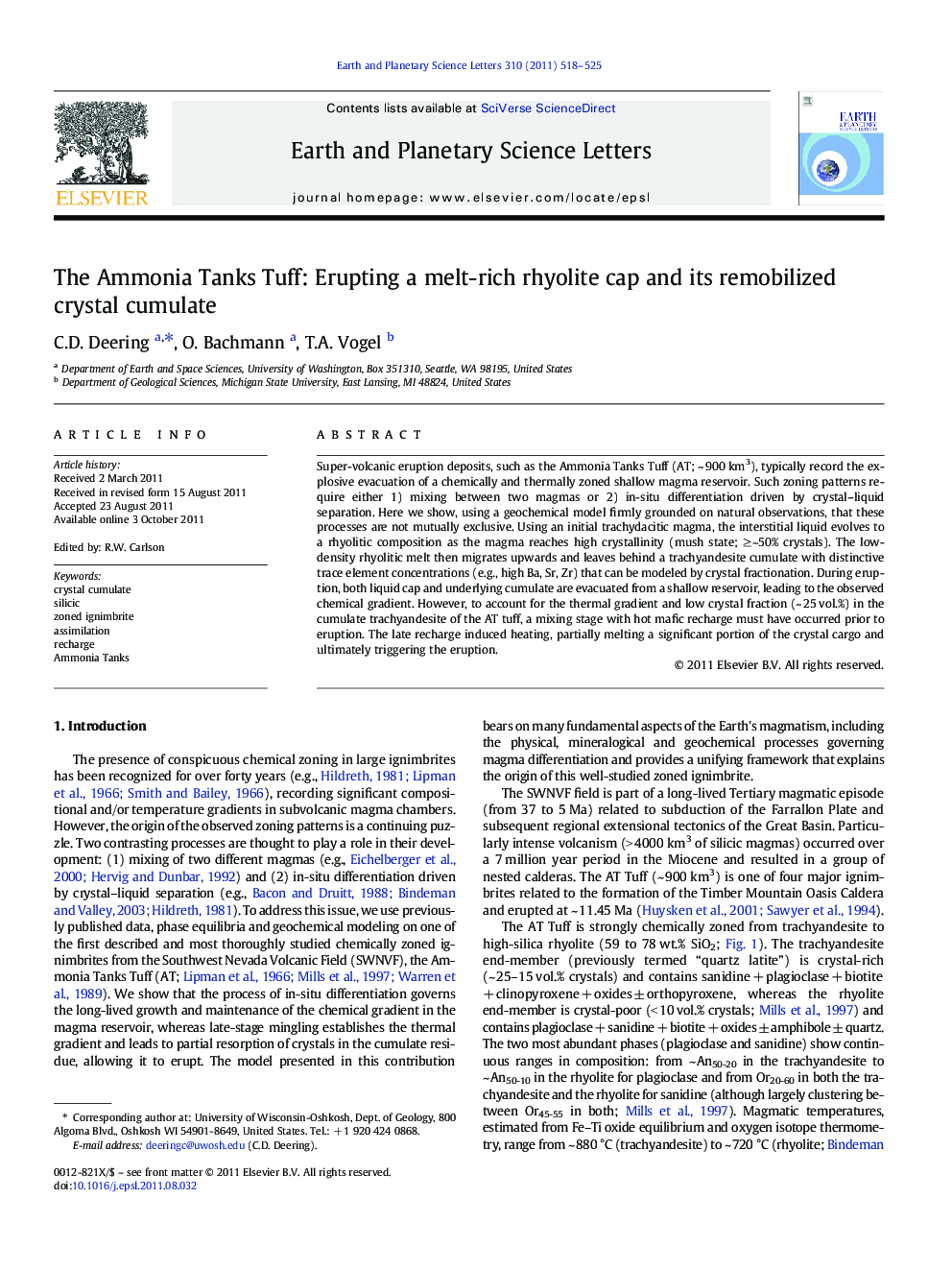| کد مقاله | کد نشریه | سال انتشار | مقاله انگلیسی | نسخه تمام متن |
|---|---|---|---|---|
| 4677765 | 1634819 | 2011 | 8 صفحه PDF | دانلود رایگان |

Super-volcanic eruption deposits, such as the Ammonia Tanks Tuff (AT; ~ 900 km3), typically record the explosive evacuation of a chemically and thermally zoned shallow magma reservoir. Such zoning patterns require either 1) mixing between two magmas or 2) in-situ differentiation driven by crystal–liquid separation. Here we show, using a geochemical model firmly grounded on natural observations, that these processes are not mutually exclusive. Using an initial trachydacitic magma, the interstitial liquid evolves to a rhyolitic composition as the magma reaches high crystallinity (mush state; ≥~50% crystals). The low-density rhyolitic melt then migrates upwards and leaves behind a trachyandesite cumulate with distinctive trace element concentrations (e.g., high Ba, Sr, Zr) that can be modeled by crystal fractionation. During eruption, both liquid cap and underlying cumulate are evacuated from a shallow reservoir, leading to the observed chemical gradient. However, to account for the thermal gradient and low crystal fraction (~ 25 vol.%) in the cumulate trachyandesite of the AT tuff, a mixing stage with hot mafic recharge must have occurred prior to eruption. The late recharge induced heating, partially melting a significant portion of the crystal cargo and ultimately triggering the eruption.
► Crystal–liquid separation within an optimal extraction window (50–70 vol.%).
► Zoned ignimbrites have cumulate residue and extracted liquid.
► Heating induced dissolution of significant portion of the crystal population.
► MELTS simulations and trace element models indicate dacite parent.
Journal: Earth and Planetary Science Letters - Volume 310, Issues 3–4, 15 October 2011, Pages 518–525